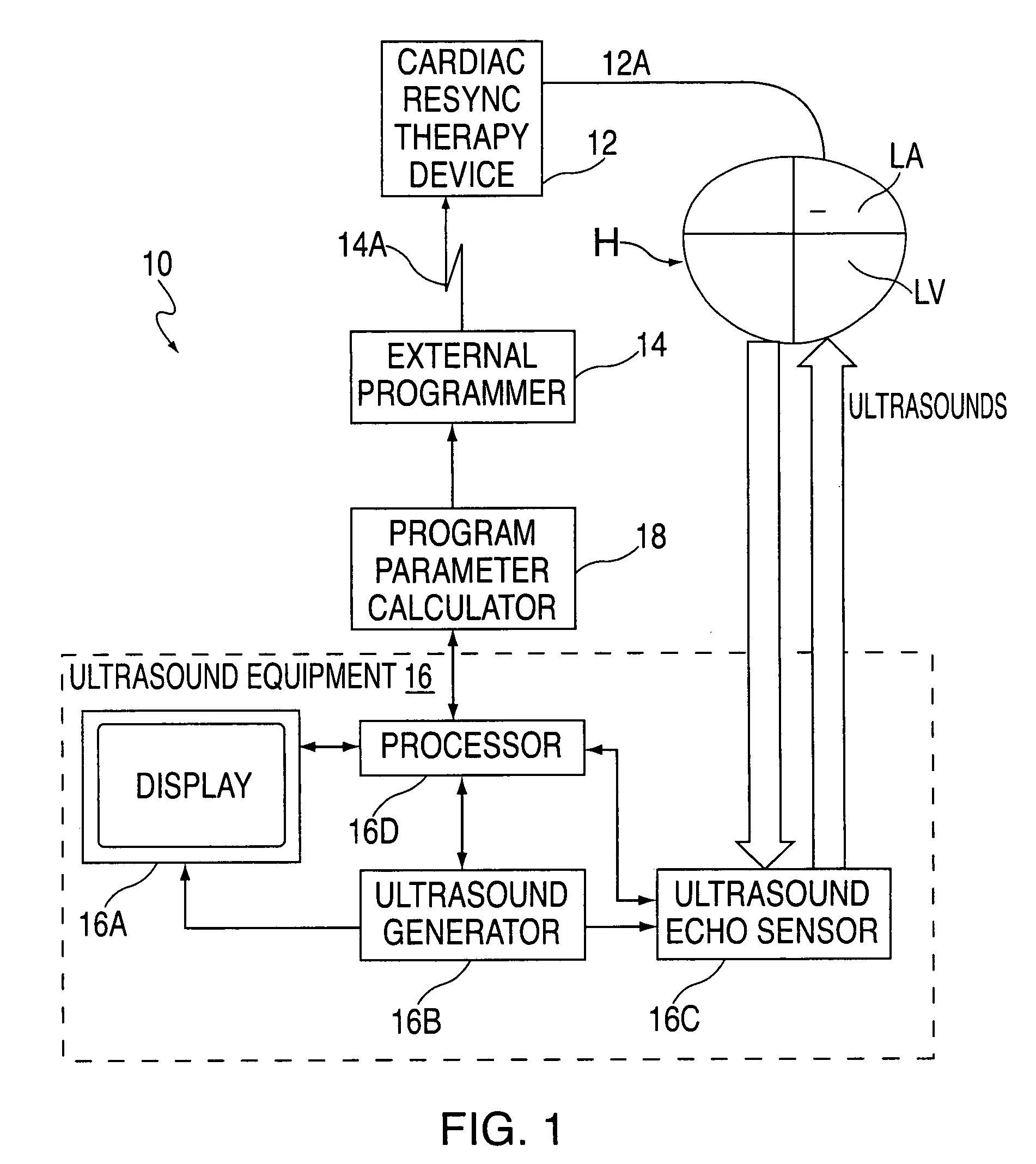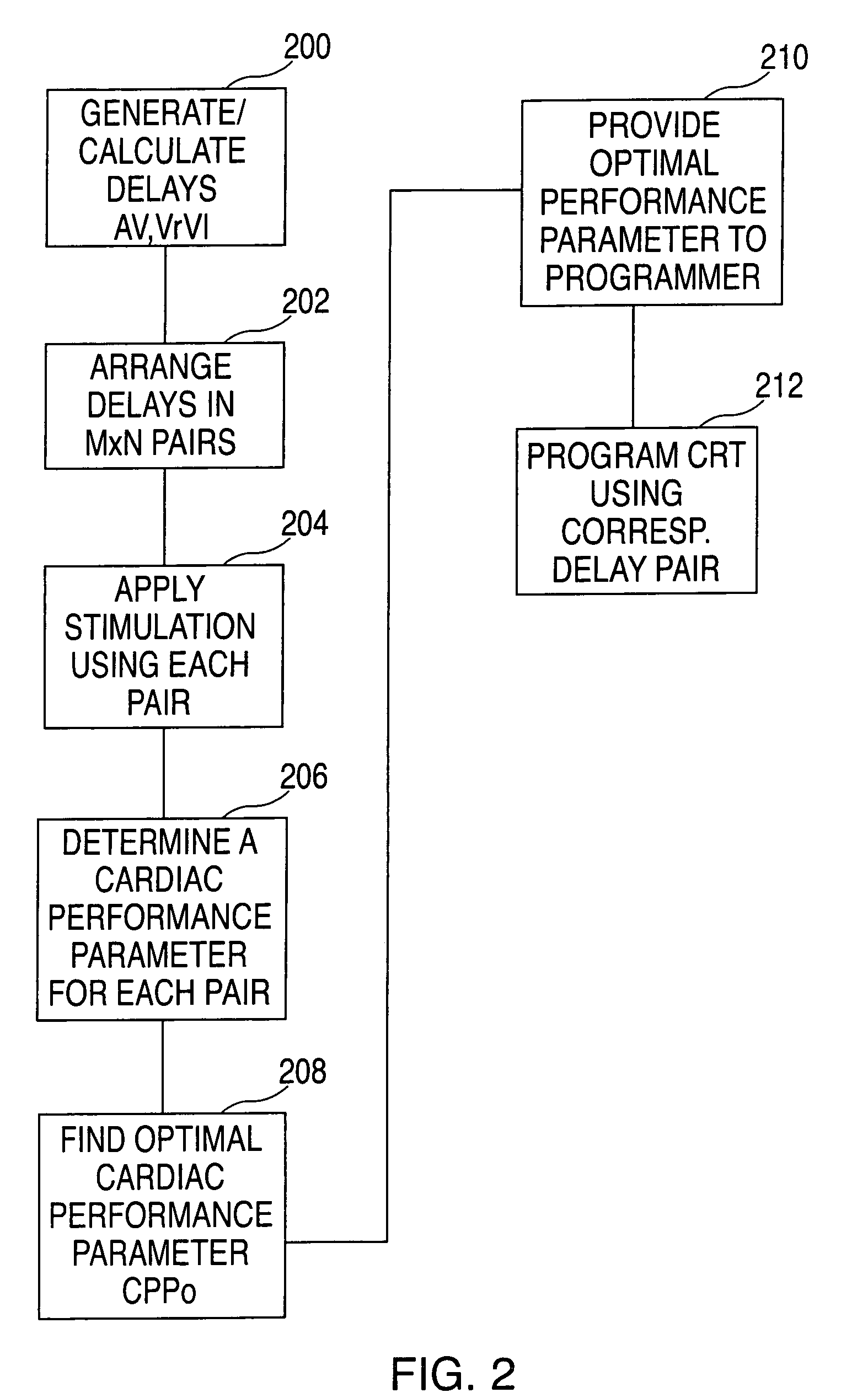Method and apparatus for automatically programming CRT devices
a technology of automatic programming and cardiac valves, applied in the field of implantable cardiac valves, can solve problems such as mechanical abnormalities in myocardial contractility, alterations in normal electrical conduction patterns, and impaired cardiac performan
- Summary
- Abstract
- Description
- Claims
- Application Information
AI Technical Summary
Benefits of technology
Problems solved by technology
Method used
Image
Examples
Embodiment Construction
[0055]FIG. 1 shows an apparatus for programming a cardiac device such as a CRT (cardiac resynchronization therapy) device 12. The device 12 includes a lead or leads 12A with several electrodes positioned to provide sensing and excitation in a patient's heart H, as discussed in more detail below, including sensing and pacing of at least the right atrium and right and left ventricles [left atrial leads not available but under development via stimulation through the coronary sinus or alternate form]. For the sake of simplicity, the electrodes have been omitted.
[0056]The apparatus 10 further includes a programmer 14 with a wand 14A. The wand 14A is used to transmit data from the programmer to the device 12. As part of this process, the device 12 receives commands to send stimulation signals to the respective cardiac chambers, and to sense the corresponding cardiac response, as discussed in more detail below.
[0057]The apparatus 10 further includes ultrasonic equipment 16. The ultrasonic ...
PUM
 Login to View More
Login to View More Abstract
Description
Claims
Application Information
 Login to View More
Login to View More - R&D
- Intellectual Property
- Life Sciences
- Materials
- Tech Scout
- Unparalleled Data Quality
- Higher Quality Content
- 60% Fewer Hallucinations
Browse by: Latest US Patents, China's latest patents, Technical Efficacy Thesaurus, Application Domain, Technology Topic, Popular Technical Reports.
© 2025 PatSnap. All rights reserved.Legal|Privacy policy|Modern Slavery Act Transparency Statement|Sitemap|About US| Contact US: help@patsnap.com



